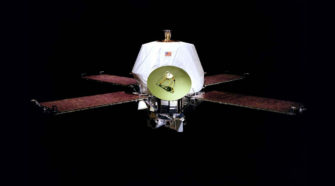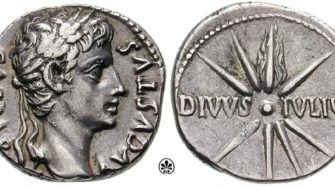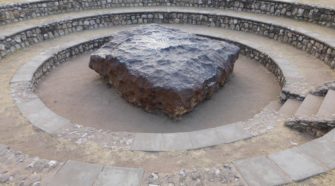Week 22
This Week in History: May 24-30
MAY 24, 1981: American astronomer Harold Reitsema and his colleagues, observing from Arizona, detect a possible moon of Neptune during an apparent occultation of a background star. This object was confirmed by Voyager 2 during its flyby of Neptune in August 1989 and is now known as Larissa and designated as Neptune VII. MAY 24, …
Comet of the Week: “Caesar’s Comet” C/42 K1
Perihelion: 44 B.C. May 25.0, q = 0.22 AU The appearance of a bright comet is certainly a stimulus of important scientific investigations, and, under the right circumstances, in today’s society can also be a focus for popular culture, at least for a while. In more ancient times, however, when comets were still widely considered …
Special Topic: Large Ground Meteorites
The general topic of meteorites was discussed as a “Special Topics” presentation four weeks ago. The large majority of meteorites that are known are not especially large, being of the order of a few kg in mass; with only a handful of exceptions, even the larger ones tend to have a mass of no more …



